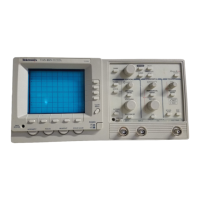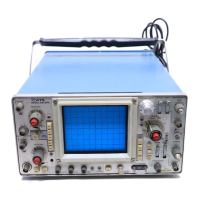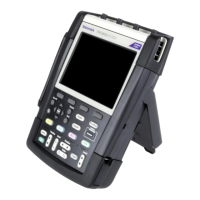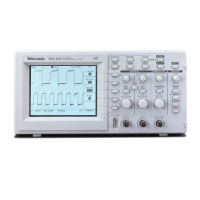•
•
•
Typical Characteristics
Table 1-20: Typical Characteristics - Triggering System (Cant.)
Name
TAS
485 Edge-Type Trigger Sensitivity,
Not
DC
Coupled
Description
The typical sensitivities are
as
follows:
Trigger Source
Noise Reject
HFREJ
LF
REJ
AC
Typical Signal Level for Stable Triggering
1.2 divisions from
DC
to 25 MHz, in-
creasing to 3.5 divisions at
250 MHz.
0.5 division or less will not trigger.
0.30 division from
DC
to
10kHz;
attenu-
ates signals above the upper
-3
dB cut-
off frequency of
50 kHz.
0.30 division from 100 kHz to 25 MHz,
increasing to 1.4 division at
250 MHz;
attenuates signals below the lower
-3
dB cutoff frequency
of
50
kHz.
0.30 division from 350 Hz to
25
MHz,
increasing to 1.4 division at
250 MHz;
attenuates
Signals below the
-3
dB cut-
off frequency of
160
Hz.
Lowest Frequency for Successful Oper- 50 Hz with 1 division.
ation of
"Set Level to 50%" Function
Holdoff Control Range
Increases Main sweep holdoff time by a factor of
10.
Table
1-21: Typical Characteristics - Video Triggering System
Name
Field Separation
Description
Stable trigger on odd or even fields
in
interlaced video systems
with
line rates between
12
kHz and 17 kHz.
Table 1-22: Typical Characteristics - Z-Axis
Name
Sensitivity
Rise Time
TAS 475 and TAS 485 Service Manual
Description
The sensitivity
is
as follows:
Condition
DCto
2 MHz
2 MHz to
20 MHz
<15
ns.
Sensitivity
Positive voltage decreases intensity;
+2
V blanks a maximum intensity trace.
+2
V modulates a normal intensity trace.
+2
V
(DC
to 20 MHz) blanks a 1
I1A
CRT
beam.
1-19

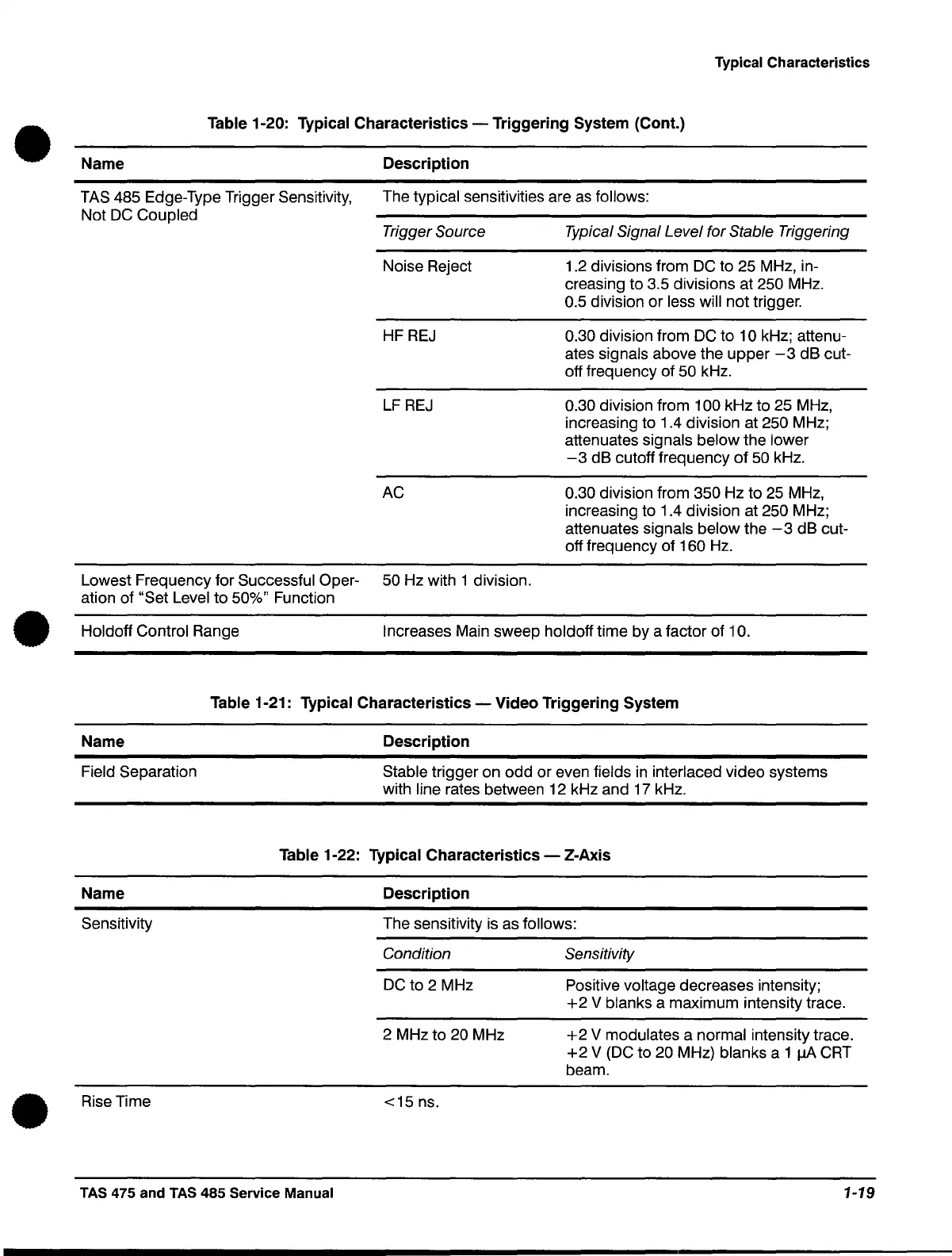